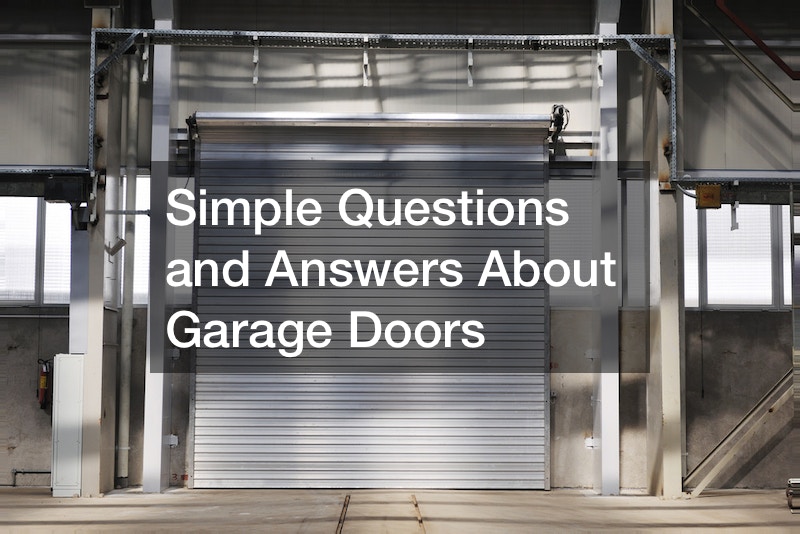
Unfortunately, when it comes to COVID-19, we’re not out of the woods yet. That much is obvious, thanks to recent reports from The Washington Post and others revealing that “the Trump administration is preparing for a possible second wave in the novel coronavirus pandemic this fall.”
With that in mind, it is important to remain cautious and continue taking safety measures whenever possible — safety measures including wearing masks, frequently and thoroughly washing your hands, practicing social distancing, and avoiding unnecessary travel. If you can avoid contact with several different people, it is probably for the best… at least for the foreseeable future. That applies to repairs around the house, too.
With a little research, it is possible to tackle a surprising number of household repairs and/or do-it-yourself projects on your own. Here are some of the most straightforward and necessary repairs to get you started.
1. First Thing’s First: Tidy Up Around The House

Take this opportunity to get the house clean — really clean. According to a study by Indiana University, people with clean homes are in better physical health. Plus, Psychology Today adds, clutter stimulates and produces the stress hormone cortisol. Reduce clutter, and your mental health will fare better as well.
Now is the time to tackle less common cleaning projects. Set aside some time to finally dust and clean vents and baseboards. “Cleaning them can help reduce allergens in your home and increase the efficiency of your air conditioning or heating unit,” Curbed explains. Remove vent covers and wash them with hot water and mild, gentle soap, like dish soap. Dry vent covers completely and replace and refasten them. If you skip this step, simply wipe vents with a microfiber cloth. Make sure the cloth is dry to avoid smearing and spreading dust.
Clean out closets and junk drawers. Things pile up — often without us even noticing. Plus, kitchen and bathroom drawers can get a little gross under all that clutter. Take everything out, throw out what you don’t need, and do not be surprised if you find residue from food or beauty products. Consider purchasing inexpensive dividers to help organize and sort utensils and items when you put them back in.
Finally, vacuum under rugs and furniture, and clean out the space underneath your bed. There are no-contact drop boxes for old clothes and shoes, perfect for getting rid of extra items after COVID-19.
Of course, with stress and anxiety levels at an all-time high, you may not feel particularly up to the task, or you may feel up to surface-cleaning only. If that’s the case, do not fret. Hire a cleaning service to deep clean your house or apartment, and spend a few relaxing hours out on the patio or balcony with a good book.
2. Clean Out Gutters And Drainpipes
Your house may be squeaky clean, but the do-it-yourself (DIY) repairs and projects do not end there. There is plenty left for you to do. Make the smart decision to clean out your gutters and drain pipes as soon as possible.
Clearing debris, including sticks, twigs, leaves, dirt, and any other refuse, out of your gutters is an important preventative measure. By completing this particular DIY project or repair, you can avoid costly ones in the future. If you neglect cleaning the gutters and drainpipes, water may accumulate on top of your roof, causing water damage, structural damage, and/or flooding. Another possibility is an infestation. Pests and rodents view the compact twigs, leaves, and dirt left behind as the perfect place to build a nest.
Unfortunately, home repair work can only do so much. If you are in the process of clearing out the gutters or tidying up the attic and notice visible signs of existing water damage, call roofing contractors right away. Contractors will remain outdoors, keeping you perfectly safe from transmission after quarantine. If you have significant water damage, address it right away to avoid parts of the roof collapsing or caving in.
3. Wash Shingles

Another important part of roofing maintenance and home repair work involves thoroughly washing shingles. Leaving mold, mildew, or algae on rooftop shingles spells disaster. These living fungi will eat away at and erode your roof over time. Left unchecked too long, mold, mildew, and algae will leave shingles permanently damaged and you will have no choice but to replace them.
Washing shingles constitutes relatively easy home repair work. Simply “spray wash the roof with a 50% mix of water and bleach to get rid of the algae,” This Old House recommends. In most cases, it is wise not to use a pressure washer. Many shingles are not hardy enough to stand up to pressure washers and may get damaged in the process. A regular garden hose will do for this particular home repair work.
While you are cleaning shingles, look out for any missing, torn, warped, or blistering shingles. Replace damaged shingles after cleaning the roof.
4. Take Another Look At Your Home’s Insulation
Another straightforward yet important task to conquer during your home repair work is taking a close look at your home’s insulation and weatherproofing. “Large amounts of heat can be lost through uninsulated, or under-insulated, basements, crawl spaces, and attics,” Green Optimistic writes. Make sure all of these areas and other notoriously drafty rooms, like the garage, are properly insulated. Caulk or weatherstrip around drafty doors and windows to save 10 to 15% on monthly energy bills. “Aluminum strips with a long tube of compressible rubber can be used to make a tight seal against the door,” The Washington Post advises.
Of course, sometimes, adding or replacing insulation or weather stripping isn’t enough. Materials like wood warp over the years, potentially leaving gaps and causing persistent drafts. If your garage is freezing no matter what you do, for example, it may be time to consider professional garage door repair. A professional can assess your garage door for problem areas and fix them, or help you replace your garage door altogether if it comes to it.
5. Spruce Up The Yard

Making over your home involves making over the entire home more often than you might think. Of those working on home renovations, 35% opt for whole home renovations. Approach your home repair work the same way. Do not just clean and fix things inside your home. Do not contain repairs to the exterior and roof only. The appearance and functionality of your yard matter a great deal, too!
Critically assess the appearance of your lawn. Is your grass dry or parched and permanently a dull, yellow-brown color? Are there patches of your lawn where grass simply does not grow? There are plenty of things you can do about it! Take on wilting or draught-damaged grass as your next home repair work project.
What it takes to repair a lawn depends on your particular problem. To begin, treat potential problems. Spray your lawn with an herbicide to kill weeds. Vacuum — yes, vacuum — any areas with pebbles, sand, or significant amounts of gravel. All three of these things prevent grass from growing. Vacuuming them up gives lush, green grass a fighting chance. Power rake the lawn to remove excess materials, break up any unwanted roots, and aerate the soil in preparation for new grass seeds. Once that is done, plant new grass seeds according to the instructions on the package. Stick to them. Different grass varieties and seeds may have different needs.
Of course, if you have a persistently dry, yellowing lawn, a broken irrigation system may be the culprit, especially in hot, dry climates, like California. Contact irrigation repair services if you have an irrigation system in place and there are still trouble spots here and there — or all over your lawn. For a rare, isolated trouble spot where grass will not grow, consider placing a fire pit, planter, or lawn ornament over that spot, but only if it looks natural and relatively inconspicuous.
6. Install New Faucets
Once you have completed adequate home repair work outside your home and on the exterior of your home, you can move from the outside in. Plumbing repair service professionals make it plain: perpetually leaky faucets drive up your water bill. Plus, old faucets are often inefficient, even if they do not leak. Take advantage of your time post-quarantine to replace kitchen and bathroom faucets. Replace faucets with new, efficient ones for significant savings.
The task of replacing faucets — believe it or not — is relatively simple. As far as tools go, all you will need is an adjustable wrench, pliers, safety equipment (gloves, goggles, etc.), and new faucet parts, according to DIY Network. Remove the existing faucet. Determine whether it is a single hole, a four-inch triple hole, or an eight-inch triple hole. This step is important if you want to replace the faucet in your existing countertop. If you are replacing the counter or cabinet, you can skip it. Assemble the parts, and make sure you connect all hardware where it needs to be (i.e., tightly fasten supply tubes). It may seem like a large undertaking, but a quick, five-minute YouTube video can easily walk you through all the steps.
Left unchecked, a leaky faucet will waste up to 3,000 gallons of water per year, according to the Environmental Protection Agency (EPA).
In many cases, this is an undertaking that is perfectly safe to tackle on your own during your home repair work. However, there are a few emergencies that can come up. Just be aware of them. Things like water valve shutoff failure can lead to water damage and/or flooding. Contact an emergency plumbing service if shut off valves do not work or fail while you are working.
7. Tune Up Your Air Conditioner

AC installation requires quite a bit of work, and it is best left to the professionals. Tuning up an existing air conditioning unit, on the other hand, is relatively straightforward, and more than fair game for your home repair work post-quarantine. What does tuning up your air conditioner look like?
Start small. A new filter works wonders — really. A new filter ensures that the filter is doing its job. Filters sort popular allergens, like dust, dander, and pet fur, out of the air and literally make it easier to breathe. Routinely changing your filters makes sure that they are working properly and not stressing your heating, air, and ventilation (HVAC) system. An air conditioning unit or HVAC system that is not stressed or overworked will run more efficiently and ultimately lower monthly utility bills. Plus, it will be easier to keep your home cool during summer and pleasantly warm during winter.
Keep your air conditioner running as efficiently as possible by cleaning the fins and exterior of the unit regularly as well. A soft-bristle vacuum brush works perfectly for this purpose. The fins are gentle. Do not use anything too abrasive to clean them.
Invest in and install a programmable thermostat to ensure your air conditioner is always at the optimal temperature, and not working significantly harder than it needs to.
Taking these steps will help minimize repairs. According to Consumer Affairs, AC repairs are among the most common household repairs and account for nearly 24% of all home repairs every year.
When is it time to call a professional? Contact AC repair services for professional services if: it’s been a year or more since your last AC inspection, your unit is leaking, the air indoors is sticky and thick with humidity, or your unit is making loud sounds or emitting foul odors. Another sign that it may be time to call in a professional is if your air conditioner is circulating warm air, i.e. doing the opposite of what it is supposed to do.
With the second wave of COVID-19 possibly looming this fall, taking precautions wherever and whenever possible is a wise thing to do. Learn to be self-sufficient and complete as much home repair work and DIY home improvement projects on your own and to the best of your abilities. Whether that means just tidying up, reseeding the lawn, replacing the filter for more efficient air conditioning, or gutting and replacing faucets, any little bit helps! Start checking items off your home repair to-do list today.




